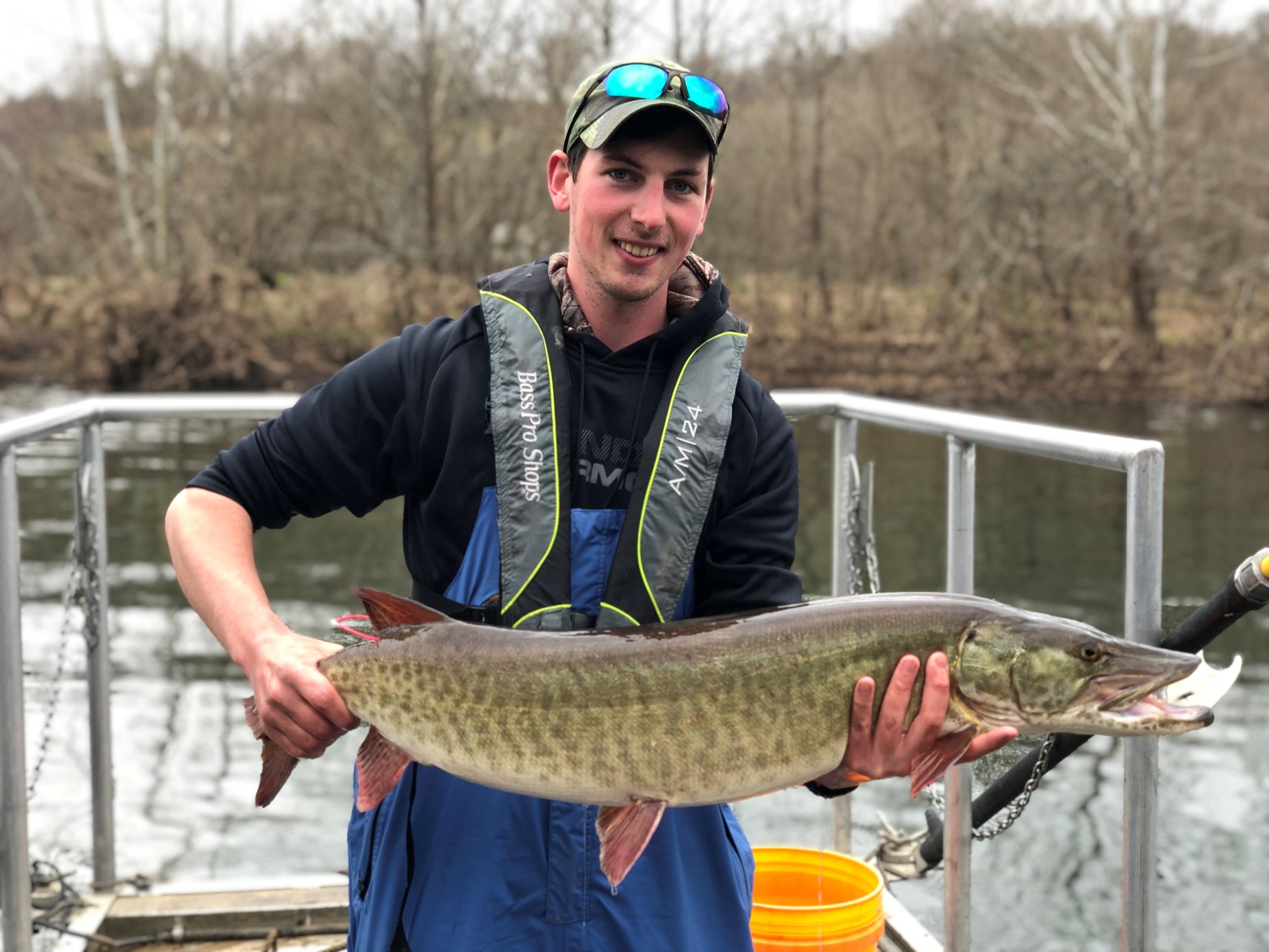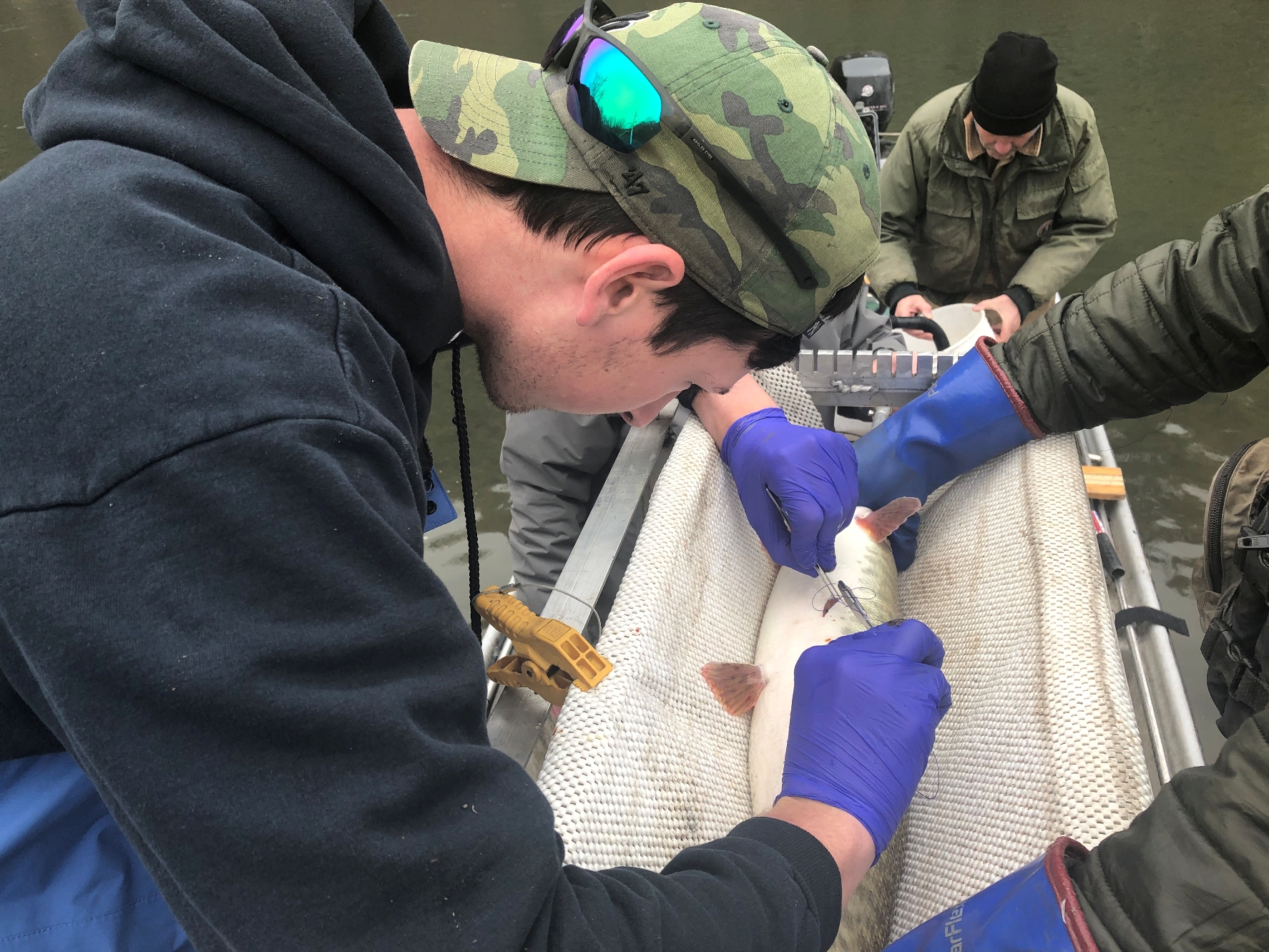MUSKY WARM-WATER MORTALITY STUDY IN JAMES RIVER
from The Fishing Wire

Warm water angling is a contentious topic among devout muskie anglers, with many anglers deciding to stop fishing when water temperatures exceed 80°F because catching fish in elevated temperatures is believed to lead to high mortality. Until this point, there has been no formal evaluation to validate this belief. Over the past two years, graduate students from Coastal Carolina University, in cooperation with the Virginia Department of Wildlife Resources (DWR), the West Virginia Department of Natural Resources (WVDNR), and West Virginia University (WVU) conducted a two-year warm-water catch-and-release mortality study for muskellunge in the upper James River.

Researchers surgically implanted muskellunge between 26 and 46 inches in length with individually coded radio tags in February-March of 2020 (N = 45) and 2021 (N = 50) so we could track and monitor the fates of all tagged fish. We also attached external loop tags to the radio tagged fish so anyone who caught a radio tagged fish could report it and receive a $50 reward.

With the help of local anglers, researchers attempted to catch half of the radio tagged fish during the warm-water period, which we defined as July through August because that is when water temperatures tended to exceed 80°F. After a tagged fish was caught and released, researchers tracked the fish for several days to verify whether it survived or died.
We were able to locate 39 of 45 fish in 2020 and 46 of 50 fish in 2021 prior to the beginning of July each year. The missing fish may have moved into areas we could not track, had their tags fail, or were unreported harvests. Five of the located fish in 2020 had died prior to the warm-water period and six died prior to the warm-water period in 2021, one of which was harvested.
Of the surviving fish we were able to locate, seven fish were caught in 2020 and five were caught in 2021. Three of the seven fish caught in 2020 died and one of the five fish caught in 2021 died, leading to a mortality estimate of 33.3% for fish released in warm water. Additionally, we had one natural mortality in 2020 and three natural mortalities in 2021, resulting in a natural mortality estimate of 6.9% for the warm-water period.
Fishing action (i.e., follows, strikes, and catches) during the warm-water period was extremely low, even with known locations of tagged fish and experienced anglers using a variety of tactics (e.g., live bait, night fishing). Fish also visually exhibited signs of stress (e.g., no movement or interest in baits presented to them) and would aggregate near thermal refugia (e.g., creek mouths).
We used our mortality estimates, as well as James River muskellunge growth data and angler catch data from previous summers, to simulate how a season closure during the warm-water season would affect the size distribution of the James River muskellunge population. Based on our simulations, the changes in the estimated probability of muskellunge achieving >40” and >45” did not significantly increase in the upriver (+2.0% and +0.5% respectively) or the downriver (+2.5% and +0.1% respectively) based on expected exploitation rates.
Take home points:
- Mortality is higher for muskellunge caught in warm water.
- Catchability of muskellunge during the warm water period is low.
- Because few muskellunge are angled in the summer, the effects of summer angling mortality on size structure of muskellunge in the James River is minimal despite the high probability of mortality for fish that are angled during this period.